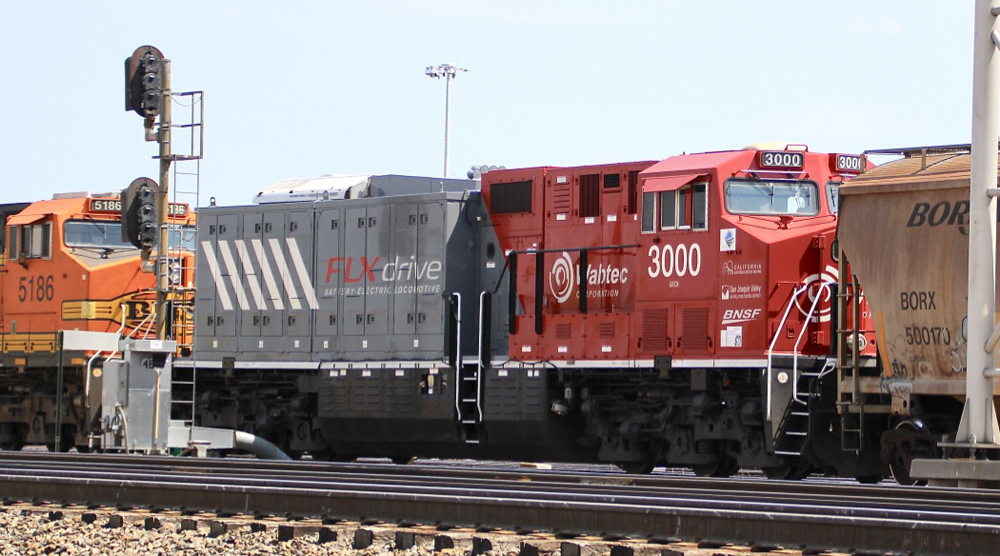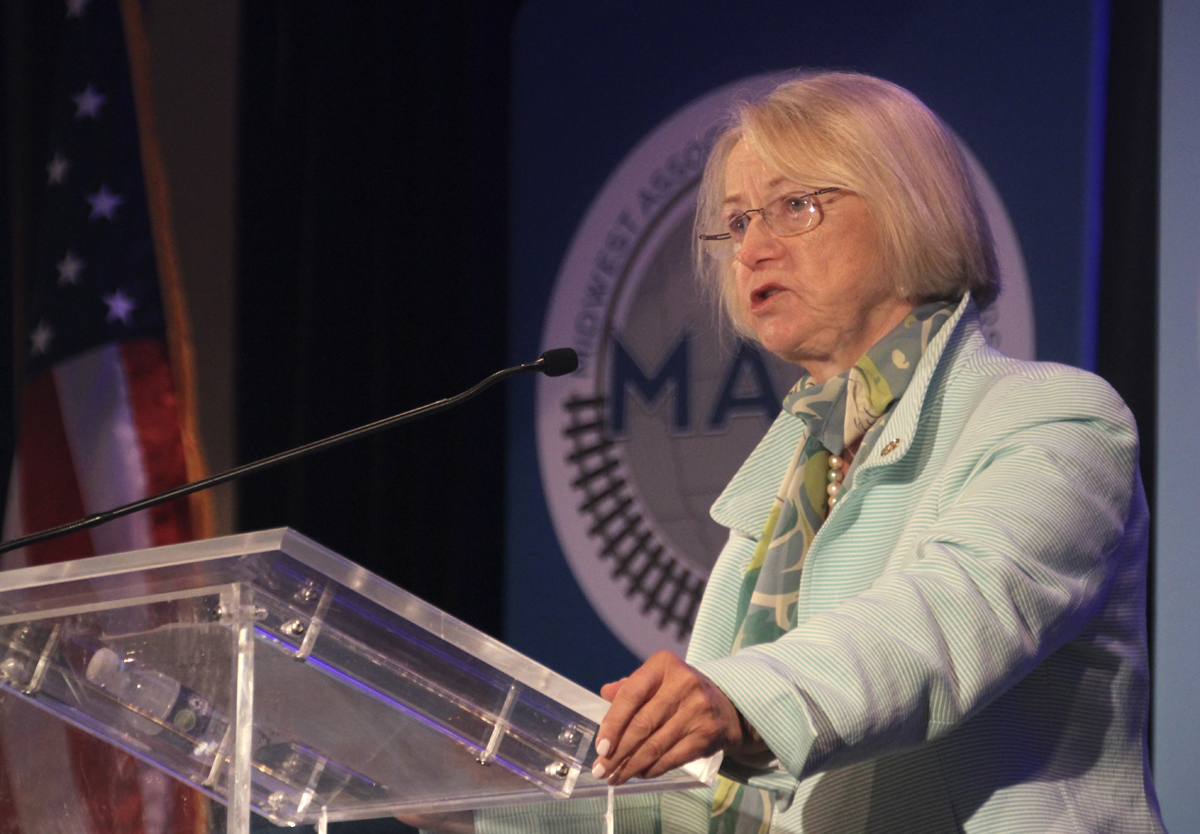
MONTREAL — Canadian National will be the first North American buyer of Wabtec’s FLXdrive battery-electric locomotive, for its Bessemer & Lake Erie Railroad.
The railroad calls the locomotive’s technology key to transitioning to a lower-carbon future, and says Pennsylvania’s Department of Environmental Protection is providing financial support under the Marine and Rail Freight Movers Grant Program.
“As part of our sustainability strategy to reduce freight transportation emissions through innovation, we plan to continue to lead the sector by deploying low- and no-carbon technologies,” CN CEO JJ Ruest said in a press release. “At CN, we believe rail has a tremendous potential to reduce the environmental impact of transportation. As a mover of the economy, CN is committed to playing a key role in the transition to low-carbon economy.”
Wabtec CEO Rafael Santana said FLXdrive “is a defining moment for the freight rail industry, and Wabtec is proud to partner with Cn to accelerate the industry toward low- to zero-emission locomotives.”
After a FLXdrive demonstrator tested on BNSF Railway earlier this year, Wabtec announced plans to commercially produce a more powerful next-generation version [see “Wabtec says next generation of battery-electric will achieve 30% fuel and emission savings,” Trains News Wire, May 17, 2021]. Australia’s Roy Hill became the first buyer of that FLXdrive locomotive in September [see “Australian mining firm is first buyer …,” News Wire, Sept. 13, 2021].
The CN purchase comes days after rival Canadian Pacific announced it was expanding its hydrogen locomotive program from one to three units [see “CP to build additional hydrogen locomotives …,” News Wire, Nov. 1, 2021].














I might remind everyone that this was tested using Wabtec’s lesser powered prototype engine (2.3Mwh) with the 18,000 cells. BNSF placed one between 2 Tier 4’s and it saved 6200 gallons of diesel. (~$20k) Roy Hill in Australia is buying the 7Mwh version. This version is reported as being able to cut fuel costs by 30%.
With a new Tier 4 going for about $2 million each, the 10-11% sounds about right. If Wabtec can promise a 30% reduction (3 times more than the prototype) and keep the cost at or around a typical Tier 4 AC loco, then we are talking about some serious cost savings.
You do wonder if PSR had the same kind of return. And we all know what a turbo does when it blows up, what happens to these batteries when the cooling system gives up the ghost? What if the traction motor catches fire and gets into the battery compartment? There are other things to look at besides the savings and pollution.
Going to be interesting to see if Progress Rail eventually comes up with the same thing or if they continue to look at other opportunities. Even though they already have a Battery Powered switcher.
I hope they make it a heritage engine and paint in B&LE colors!
Joe Biden says the end of the world is at our doorstep and your only concern is the color of the locomotive Pa. thinks will save us?
To Carl’s defense, this is a railfan site, not UN COP26. Now if Boris spent his time discussing his love of early BR paint schemes in Glasgow, that may be a problem, but a pro-B&LE plug seems right at home here.
Read article, which is from an EV company, so they will have a reporting bias that favors their products. It did not explain how the system would actually work assuming EV are driven everyday and thus losing stored energy. So are EV’s storing MORE energy than needed, so the power companies may access this stored power? And how much base load will we need to sustain peak demands. Further, this article (from Trains) does not report the fixed and variable costs of this technology. Never forget that economic laws, like gravity always win. Cheers.
A smooth transition to battery power, whether in locomotives, cars or trucks, cannot happen without a massive expansion of generating capacity. And in real 24/7 power plants, not just ephemeral wind and solar. Remember, sailing ships could be becalmed for days and solar is minimal almost half the day, on average. Unfortunately, concrete plans from the politicians for dependable expanded future power are minimal. So an interesting future awaits.
You won’t need massive expansion.
https://www.virta.global/blog/myth-buster-electric-vehicles-will-overload-the-power-grid